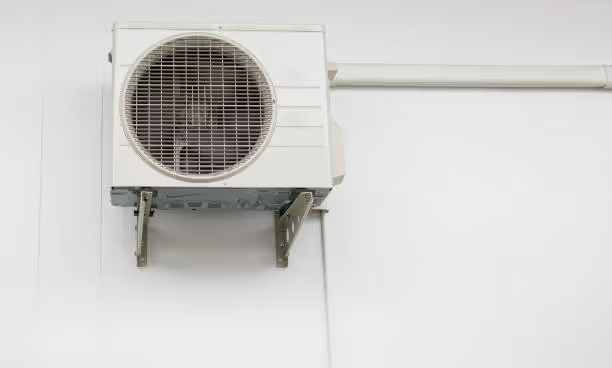Mini Split Installation in Brandon, FL

Discover the benefits of ductless mini-split systems for zoned comfort and energy efficiency in Brandon, FL homes. This guide details our comprehensive installation process, emphasizing the importance of a professional approach for optimal system performance and longevity. We begin with a thorough site assessment to understand your home's unique thermal dynamics and identify the best zones for heating and cooling. Precision sizing is crucial, and we perform detailed load calculations to ensure your system is neither too small nor too large, preventing energy waste and ensuring effective dehumidification. Strategic placement of indoor and outdoor units is key for even airflow, quiet operation, and aesthetic integration. Our meticulous process includes precise refrigerant piping and electrical work, adhering strictly to building codes for safety and reliability. Finally, rigorous system commissioning, including leak testing, vacuuming, and performance verification, guarantees your mini-split system operates at peak efficiency from day one.

Professional Mini-Split Installation in Brandon, FL
Ductless mini-split systems represent a leap forward in home comfort, offering zoned temperature control, remarkable energy efficiency, and a flexible solution for homes without existing ductwork. For residents in Brandon, FL, where managing heat and humidity is a year-round priority, a properly installed mini-split can transform your living space. However, the performance, efficiency, and longevity of your system depend entirely on the quality of its installation. A meticulous, professional approach is not just a recommendation; it is essential for unlocking the full potential of your investment.
Our installation process is a comprehensive, multi-step procedure designed to ensure your ductless system operates flawlessly from day one. We focus on technical precision and a deep understanding of how these systems integrate with the specific architectural styles and climate demands of Brandon homes.
The Foundation: Comprehensive Site Assessment
Before any equipment is chosen, a thorough site assessment is the critical first step. This is far more than a simple walkthrough. Our technicians conduct an in-depth evaluation of your property to understand its unique thermal dynamics. We analyze room dimensions, ceiling heights, window and door quality, insulation levels, and sun exposure throughout the day.
This assessment helps identify the optimal zones for heating and cooling. We consider how you use each space—a home office may have different requirements than a bedroom or a kitchen with heat-generating appliances. For Brandon homes, we also pay close attention to areas that struggle with humidity, as a properly installed mini-split is an excellent dehumidifier. This initial consultation allows us to map out a customized solution tailored precisely to your home’s layout and your family’s comfort needs.
Precision Sizing for Optimal Performance
One of the most common points of failure for any HVAC system is improper sizing. A unit that is too small will run constantly without ever reaching the desired temperature, leading to high energy bills and premature wear. Conversely, a unit that is too large will cool the space too quickly, satisfying the thermostat before it has a chance to effectively dehumidify the air. This leads to a cold, clammy feeling and inefficient short-cycling that strains components.
We eliminate this guesswork by performing detailed load calculations. Using industry-standard methodologies, we determine the exact British Thermal Unit (BTU) capacity required for each zone. This scientific approach ensures that your system is perfectly matched to the space, providing consistent comfort, superior humidity control, and peak energy efficiency.
Strategic Placement of Indoor and Outdoor Units
Where the components are installed is just as important as the equipment itself. The placement of the indoor and outdoor units directly impacts performance, accessibility, and aesthetics.
Indoor Unit (Air Handler): The goal for the indoor unit is to provide even, quiet air distribution without creating uncomfortable drafts. We typically recommend mounting it high on an exterior wall. During the site assessment, we identify the ideal location in each room to maximize airflow, ensuring it covers the entire space effectively. We also consider factors like proximity to the outdoor unit to minimize the length of the line set, as well as concealing the condensate drain line for a clean, unobtrusive look.
Outdoor Unit (Condenser): The outdoor condenser needs a stable, level surface and adequate clearance for airflow and future maintenance. We work with you to find a location that is both functional and discreet. It must be placed away from areas where its operation could be a nuisance, like directly under a bedroom window. We install the unit on a robust concrete pad to prevent it from shifting over time, ensuring it remains level and operates quietly for years to come.
Meticulous Refrigerant Piping and Electrical Work
The connection between the indoor and outdoor units is the system's lifeline. This involves running a refrigerant line set and electrical wiring through a small, three-inch opening in the wall. Our technicians take great care to perform this work with precision.
The copper refrigerant lines are carefully flared and connected to ensure a perfect, leak-proof seal. These lines are then insulated to prevent energy loss and condensation, which could otherwise cause water damage. The line set, along with the power and communication wiring, is bundled and protected by a durable line hide cover on the exterior of your home, providing a professional finish that protects the components from UV rays and physical damage.
All electrical connections are performed in strict accordance with local Brandon and state building codes. This often involves running a dedicated circuit from your home’s main electrical panel to the outdoor unit. Safety and compliance are paramount, ensuring your system operates reliably without overloading your home’s electrical infrastructure.
The Final Step: System Commissioning
Once the physical installation is complete, we begin the commissioning process. This is a critical quality control phase that verifies the integrity and performance of the entire system.
First, we pressure-test the refrigerant lines with nitrogen to confirm there are absolutely no leaks. Next, we use a powerful vacuum pump to pull the entire system into a deep vacuum, removing all air and non-condensable moisture from the lines. This step is vital; any moisture left in the system can mix with refrigerant to form corrosive acids that will destroy the compressor over time.
Only after a successful pressure test and deep vacuum do we charge the system with the precise amount of refrigerant specified by the manufacturer. We then power on the system and test it in every operational mode—cooling, heating, fan-only, and dehumidification. We check temperature differentials, airflow, and remote-control functionality to confirm that every aspect of your new mini-split system is operating at peak performance, exactly as the manufacturer intended. We also ensure the condensate drain is flowing properly to prevent any future water issues. This meticulous commissioning process is what separates a standard installation from a professional one, guaranteeing efficiency and a long service life for your equipment.










